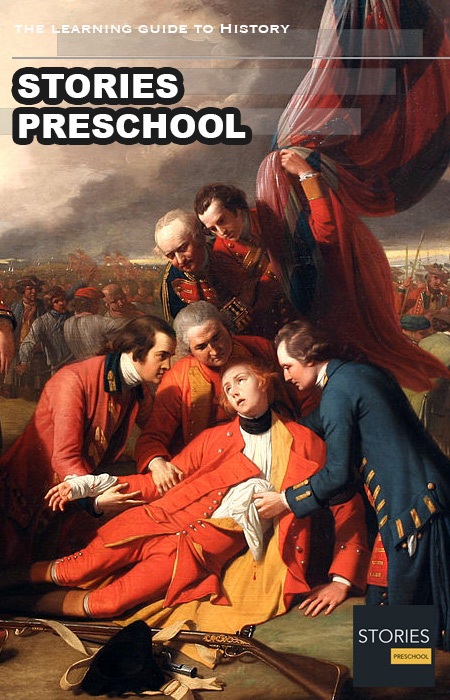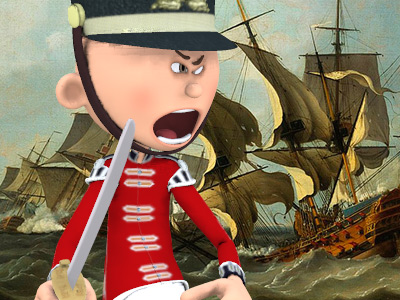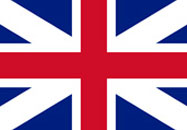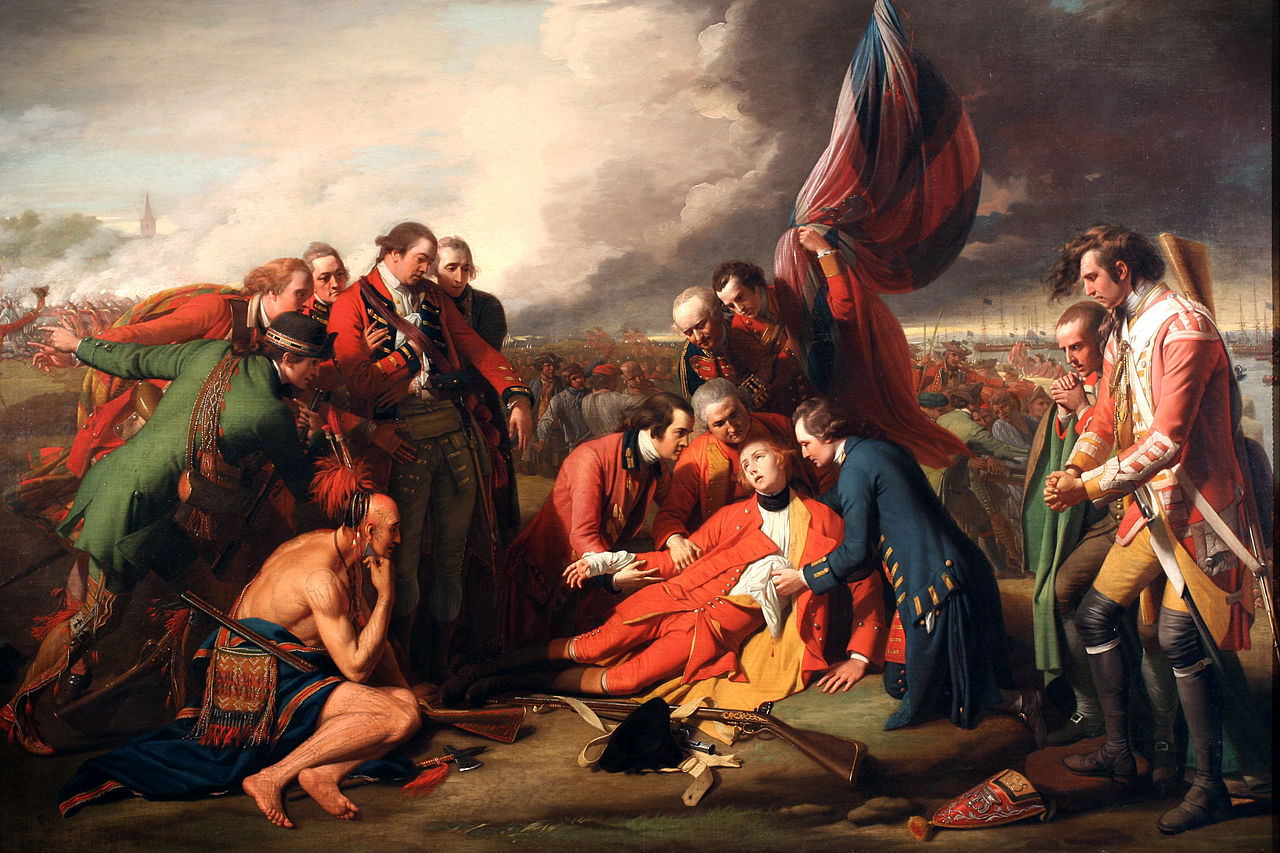Seven Years' War (1756-1763)
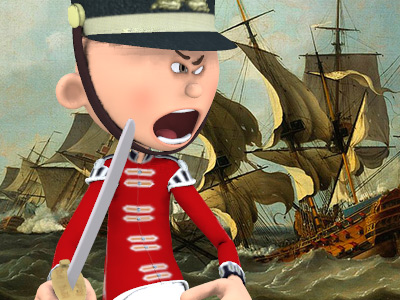
The Seven Years' War was a war fought between 1754 and 1763, the main conflict occurring in the seven-year period from 1756 to 1763. It involved every European great power of the time except the Ottoman Empire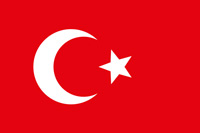 The Ottoman Empire, also known as the Turkish Empire, was an empire that controlled much of Southeast Europe, Western Asia, and Northern Africa between the 14th and early 20th centuries. The Ottomans ended the Byzantine Empire with the conquest of Constantinople in 1453. The Ottoman Empire's defeat and the occupation of part of its territory by the Allied Powers in the aftermath of World War I resulted in its partitioning and the loss of its Middle Eastern territories. and spanned five continents, affecting Europe, the Americas, West Africa, India, and the Philippines.
The Ottoman Empire, also known as the Turkish Empire, was an empire that controlled much of Southeast Europe, Western Asia, and Northern Africa between the 14th and early 20th centuries. The Ottomans ended the Byzantine Empire with the conquest of Constantinople in 1453. The Ottoman Empire's defeat and the occupation of part of its territory by the Allied Powers in the aftermath of World War I resulted in its partitioning and the loss of its Middle Eastern territories. and spanned five continents, affecting Europe, the Americas, West Africa, India, and the Philippines.
The conflict split Europe into two coalitions, led by the Kingdom of Great Britain The Kingdom of Great Britain was a sovereign country in Western Europe from 1 May 1707 to the end of 31 December 1800. The state was created by the 1706 Treaty of Union and ratified by the Acts of Union 1707, which united the kingdoms of England (which included Wales) and Scotland to form a single kingdom encompassing the whole island of Great Britain and its outlying islands, with the exception of the Isle of Man and the Channel Islands. (including Prussia
The Kingdom of Great Britain was a sovereign country in Western Europe from 1 May 1707 to the end of 31 December 1800. The state was created by the 1706 Treaty of Union and ratified by the Acts of Union 1707, which united the kingdoms of England (which included Wales) and Scotland to form a single kingdom encompassing the whole island of Great Britain and its outlying islands, with the exception of the Isle of Man and the Channel Islands. (including Prussia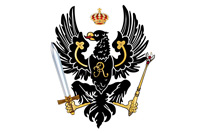 The Kingdom of Prussia was a German kingdom that constituted the state of Prussia between 1701 and 1918. It was the driving force behind the unification of Germany in 1871 and was the leading state of the German Empire until its dissolution in 1918. Although it took its name from the region called Prussia, it was based in the Margraviate of Brandenburg. Its capital was Berlin., Portugal, Hanover, and other small German states) on one side and the Kingdom of France (inc. Austria-led Holy Roman Empire, Russia
The Kingdom of Prussia was a German kingdom that constituted the state of Prussia between 1701 and 1918. It was the driving force behind the unification of Germany in 1871 and was the leading state of the German Empire until its dissolution in 1918. Although it took its name from the region called Prussia, it was based in the Margraviate of Brandenburg. Its capital was Berlin., Portugal, Hanover, and other small German states) on one side and the Kingdom of France (inc. Austria-led Holy Roman Empire, Russia Russian Empire was an empire and the final period of the Russian monarchy from 1721 to 1917, ruling across large parts of Eurasia. The rise of the Russian Empire coincided with the decline of neighbouring rival powers: the Swedish Empire, the Polish–Lithuanian Commonwealth, Qajar Iran, the Ottoman Empire, and Qing China. Russia remains the third-largest empire in history, surpassed only by the British Empire and the Mongol Empire., Spain, and Sweden) on the other. Meanwhile in India, the Mughal Empire, with the support of the French, tried to crush a British attempt to conquer Bengal.
Russian Empire was an empire and the final period of the Russian monarchy from 1721 to 1917, ruling across large parts of Eurasia. The rise of the Russian Empire coincided with the decline of neighbouring rival powers: the Swedish Empire, the Polish–Lithuanian Commonwealth, Qajar Iran, the Ottoman Empire, and Qing China. Russia remains the third-largest empire in history, surpassed only by the British Empire and the Mongol Empire., Spain, and Sweden) on the other. Meanwhile in India, the Mughal Empire, with the support of the French, tried to crush a British attempt to conquer Bengal.
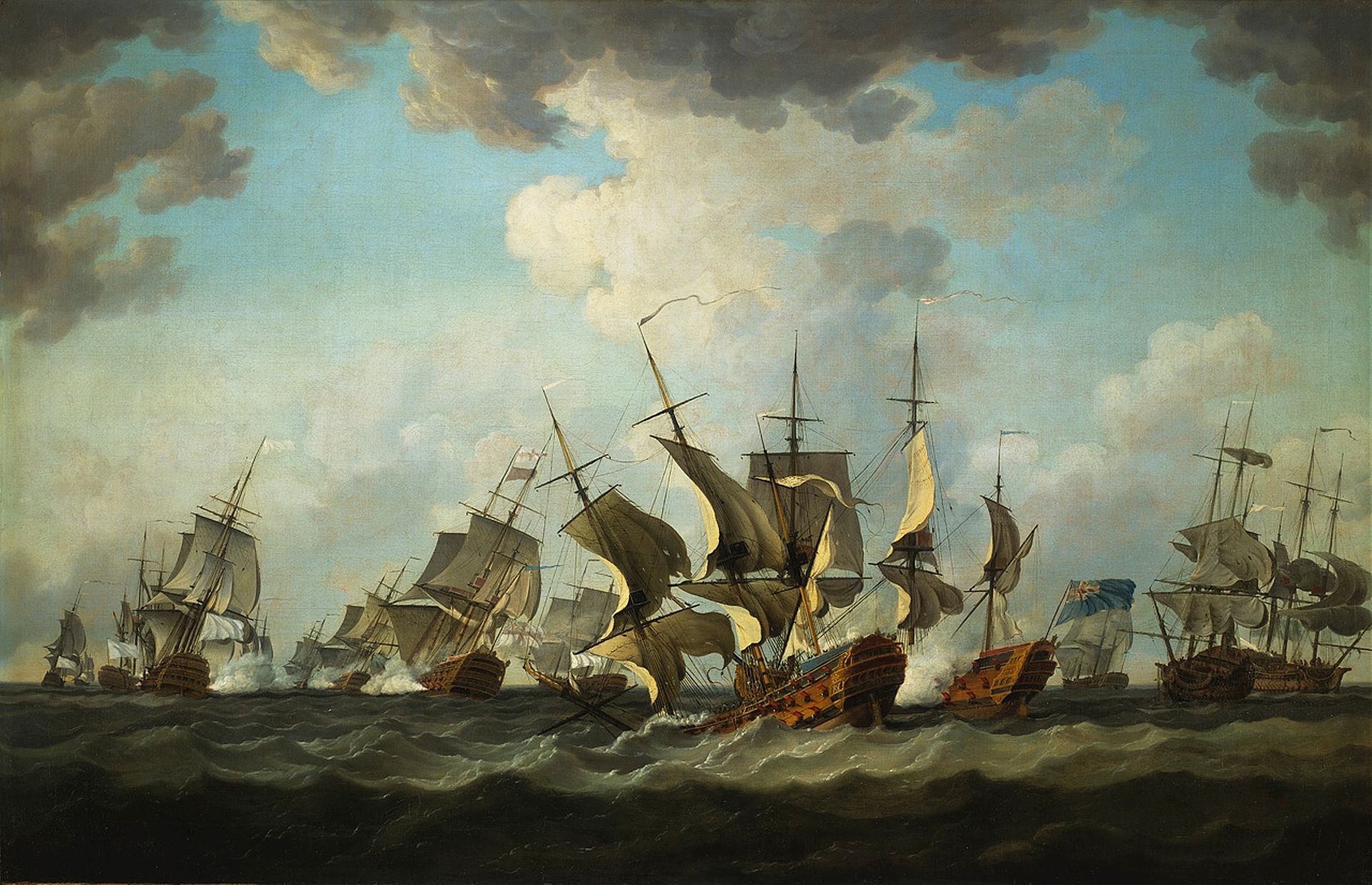
The Battle of Quiberon Bay, 20 November 1759

The Battle of Quiberon Bay, 20 November 1759
( Click image to enlarge)
Although Anglo-French skirmishes over their American colonies already began in 1754, the large-scale conflict that drew in most of the European powers was centered on Austria's desire in recovering Silesia from the Prussians' hand. Seeing the opportunity to curtail Britain's and Prussia's ever-growing might, France The Kingdom of France is the historiographical name or umbrella term given to various political entities of France in the medieval and early modern period. It was one of the most powerful states in Europe since the High Middle Ages. It was also an early colonial power, with possessions around the world. Colonial conflicts with Great Britain led to the loss of much of its North American holdings by 1763. The Kingdom of France adopted a written constitution in 1791, but the Kingdom was abolished a year later and replaced with the First French Republic. and Austria
The Kingdom of France is the historiographical name or umbrella term given to various political entities of France in the medieval and early modern period. It was one of the most powerful states in Europe since the High Middle Ages. It was also an early colonial power, with possessions around the world. Colonial conflicts with Great Britain led to the loss of much of its North American holdings by 1763. The Kingdom of France adopted a written constitution in 1791, but the Kingdom was abolished a year later and replaced with the First French Republic. and Austria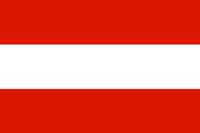 The Archduchy of Austria was a major principality of the Holy Roman Empire and the nucleus of the Habsburg monarchy. With its capital at Vienna, the archduchy was centered at the Empire's southeastern periphery. The archduchy's history as an imperial state ended with the dissolution of the Holy Roman Empire in 1806. It was replaced with the Lower and Upper Austria crown lands of the Austrian Empire. put aside their ancient rivalry to form a grand coalition of their own, bringing most of the other European powers to their side. Faced with this sudden turn of events, Britain aligned herself with Prussia, in a series of political manoeuvres known as the Diplomatic Revolution. However, French efforts ended in failure when the Anglo-Prussian coalition prevailed, and Britain's rise as the world's predominant power destroyed France's supremacy in Europe, thus altering the European balance of power.
The Archduchy of Austria was a major principality of the Holy Roman Empire and the nucleus of the Habsburg monarchy. With its capital at Vienna, the archduchy was centered at the Empire's southeastern periphery. The archduchy's history as an imperial state ended with the dissolution of the Holy Roman Empire in 1806. It was replaced with the Lower and Upper Austria crown lands of the Austrian Empire. put aside their ancient rivalry to form a grand coalition of their own, bringing most of the other European powers to their side. Faced with this sudden turn of events, Britain aligned herself with Prussia, in a series of political manoeuvres known as the Diplomatic Revolution. However, French efforts ended in failure when the Anglo-Prussian coalition prevailed, and Britain's rise as the world's predominant power destroyed France's supremacy in Europe, thus altering the European balance of power.
Summary
Conflict between Great Britain and France broke out in 1754–1756 when the British attacked disputed French positions in North America and seized hundreds of French merchant ships. Meanwhile, rising power Prussia was struggling with Austria for dominance within and outside the Holy Roman Empire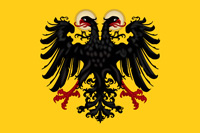 The Holy Roman Empire was a political entity in Western, Central, and Southern Europe that developed during the Early Middle Ages and continued until its dissolution in 1806 during the Napoleonic Wars. From the accession of Otto I in 962 until the twelfth century, the Empire was the most powerful monarchy in Europe. The empire reached the apex of territorial expansion and power in the mid-thirteenth century, but overextending led to partial collapse. in central Europe. In 1756, the major powers "switched partners".
The Holy Roman Empire was a political entity in Western, Central, and Southern Europe that developed during the Early Middle Ages and continued until its dissolution in 1806 during the Napoleonic Wars. From the accession of Otto I in 962 until the twelfth century, the Empire was the most powerful monarchy in Europe. The empire reached the apex of territorial expansion and power in the mid-thirteenth century, but overextending led to partial collapse. in central Europe. In 1756, the major powers "switched partners".
Realizing that war was imminent, Prussia preemptively struck Saxony and quickly overran it. The result caused uproar across Europe. Because of Austria's alliance with France to recapture Silesia, which had been lost in a previous war, Prussia formed an alliance with Britain. Reluctantly, by following the imperial diet, most of the states of the empire joined Austria's cause. The Anglo-Prussian alliance was joined by smaller German states (especially Hanover). Sweden, seeking to re-gain Pomerania (most of which had been lost to Prussia in previous wars) joined the coalition, seeing its chance when virtually all of Europe opposed Prussia. Spain The Spanish Empire was a colonial empire governed by Spain and its predecessor states between 1492 and 1976. One of the largest empires in history, it was the first to usher the European Age of Discovery and achieve a global scale, controlling vast territory. It was one of the most powerful empires of the early modern period, reaching its maximum extent in the 18th century., bound by the Pacte de Famille, intervened on behalf of France and together they launched an utterly unsuccessful invasion of Portugal in 1762. The Russian Empire was originally aligned with Austria, fearing Prussia's ambition on the Polish–Lithuanian Commonwealth, but switched sides upon the succession of Tsar Peter III in 1762.
The Spanish Empire was a colonial empire governed by Spain and its predecessor states between 1492 and 1976. One of the largest empires in history, it was the first to usher the European Age of Discovery and achieve a global scale, controlling vast territory. It was one of the most powerful empires of the early modern period, reaching its maximum extent in the 18th century., bound by the Pacte de Famille, intervened on behalf of France and together they launched an utterly unsuccessful invasion of Portugal in 1762. The Russian Empire was originally aligned with Austria, fearing Prussia's ambition on the Polish–Lithuanian Commonwealth, but switched sides upon the succession of Tsar Peter III in 1762.
Many middle and small powers in Europe, unlike in the previous wars, tried to steer clear away from the escalating conflict, even though they had interests in the conflict or with the belligerents, like Denmark–Norway. Denmark–Norway was, however, close to being dragged into the war on France's side when Peter III became Russian emperor and switched sides; Dano-Norwegian and Russian armies were close to ending up in battle, but the Russian emperor was deposed before war formally broke out. The Dutch Republic The Dutch Republic was a confederation that existed from 1579, during the Dutch Revolt, to 1795. It was a predecessor state of the Netherlands and the first fully independent Dutch nation state. Although the state was small and contained only around 1.5 million inhabitants, it controlled a worldwide network of seafaring trade routes. The income from this trade allowed the Dutch Republic to compete militarily against much larger countries. It amassed a huge fleet of 2,000 ships, initially larger than the fleets of England and France combined., a long-time British ally, kept its neutrality intact, fearing the odds against Britain and Prussia fighting the great powers of Europe, and even tried to prevent Britain's domination in India. Naples, Sicily, and Savoy, although sided with the Franco-Spanish alliance, declined to join the coalition under fear of British power. The taxation needed for war caused the Russian people considerable hardship, being added to the taxation of salt and alcohol begun by Empress Elizabeth in 1759 to complete her addition to the Winter Palace. Like Sweden, Russia concluded a separate peace with Prussia.
The Dutch Republic was a confederation that existed from 1579, during the Dutch Revolt, to 1795. It was a predecessor state of the Netherlands and the first fully independent Dutch nation state. Although the state was small and contained only around 1.5 million inhabitants, it controlled a worldwide network of seafaring trade routes. The income from this trade allowed the Dutch Republic to compete militarily against much larger countries. It amassed a huge fleet of 2,000 ships, initially larger than the fleets of England and France combined., a long-time British ally, kept its neutrality intact, fearing the odds against Britain and Prussia fighting the great powers of Europe, and even tried to prevent Britain's domination in India. Naples, Sicily, and Savoy, although sided with the Franco-Spanish alliance, declined to join the coalition under fear of British power. The taxation needed for war caused the Russian people considerable hardship, being added to the taxation of salt and alcohol begun by Empress Elizabeth in 1759 to complete her addition to the Winter Palace. Like Sweden, Russia concluded a separate peace with Prussia.
The war ended with the Treaty of Paris between France, Spain and Great Britain and the Treaty of Hubertusburg between Saxony, Austria and Prussia, in 1763.
The war was successful for Great Britain, which gained the bulk of New France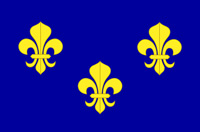 New France was the territory colonized by France in North America, beginning with the exploration of the Gulf of Saint Lawrence by Jacques Cartier in 1534 and ending with the cession of New France to Great Britain and Spain in 1763 under the Treaty of Paris. In the 16th century, the lands were used primarily to draw from the wealth of natural resources such as furs through trade with the various indigenous peoples. In the seventeenth century, successful settlements began in Acadia and in Quebec. in North America, Spanish Florida, some individual Caribbean islands in the West Indies, the colony of Senegal on the West African coast, and superiority over the French trading outposts on the Indian subcontinent. The Native American tribes were excluded from the settlement; a subsequent conflict, known as Pontiac's War, was also unsuccessful in returning them to their pre-war status. In Europe, the war began disastrously for Prussia, but a combination of good luck and successful strategy saw King Frederick the Great manage to retrieve the Prussian position and retain the status quo ante bellum. Prussia emerged as a new European great power.
New France was the territory colonized by France in North America, beginning with the exploration of the Gulf of Saint Lawrence by Jacques Cartier in 1534 and ending with the cession of New France to Great Britain and Spain in 1763 under the Treaty of Paris. In the 16th century, the lands were used primarily to draw from the wealth of natural resources such as furs through trade with the various indigenous peoples. In the seventeenth century, successful settlements began in Acadia and in Quebec. in North America, Spanish Florida, some individual Caribbean islands in the West Indies, the colony of Senegal on the West African coast, and superiority over the French trading outposts on the Indian subcontinent. The Native American tribes were excluded from the settlement; a subsequent conflict, known as Pontiac's War, was also unsuccessful in returning them to their pre-war status. In Europe, the war began disastrously for Prussia, but a combination of good luck and successful strategy saw King Frederick the Great manage to retrieve the Prussian position and retain the status quo ante bellum. Prussia emerged as a new European great power.
Although Austria failed to retrieve the territory of Silesia from Prussia (its original goal) its military prowess was also noted by the other powers. The involvement of Portugal, Spain and Sweden did not return them to their former status as great powers. France was deprived of many of its colonies and had saddled itself with heavy war debts that its inefficient financial system could barely handle. Spain lost Florida but gained French Louisiana and regained control of its colonies, e.g., Cuba and the Philippines, which had been captured by the British during the war. France and Spain avenged their defeat in 1778 when the American Revolutionary War broke out, with hopes of destroying Britain's dominance once and for all.
The Seven Years' War was perhaps the first true world war, having taken place almost 160 years before World War I World War I, also known as the First World War, or the Great War, was a global war originating in Europe that lasted from 28 July 1914 to 11 November 1918. More than 70 million military personnel, including 60 million Europeans, were mobilized in one of the largest wars in history. The war drew in all the world's economic great powers, assembled in two opposing alliances: the Allies versus the Central Powers of Germany and Austria-Hungary. View World War I » and influenced many major events later around the globe. The war restructured not only the European political order, but also affected events all around the world, paving the way for the beginning of later British world supremacy in the 19th century, the rise of Prussia in Germany, the beginning of tensions in British North America, as well as a clear sign of France's eventual turmoil. It was characterized in Europe by sieges and the arson of towns as well as open battles with heavy losses.
World War I, also known as the First World War, or the Great War, was a global war originating in Europe that lasted from 28 July 1914 to 11 November 1918. More than 70 million military personnel, including 60 million Europeans, were mobilized in one of the largest wars in history. The war drew in all the world's economic great powers, assembled in two opposing alliances: the Allies versus the Central Powers of Germany and Austria-Hungary. View World War I » and influenced many major events later around the globe. The war restructured not only the European political order, but also affected events all around the world, paving the way for the beginning of later British world supremacy in the 19th century, the rise of Prussia in Germany, the beginning of tensions in British North America, as well as a clear sign of France's eventual turmoil. It was characterized in Europe by sieges and the arson of towns as well as open battles with heavy losses.
Nomenclature
In the historiography of some countries, the war is named after combatants in its respective theatres—e.g., the French and Indian War in the United States. In French-speaking Canada, it is known as the War of the Conquest, while it is called the Seven Years' War in English-speaking Canada (North America, 1754–1763), Pomeranian War (with Sweden and Prussia, 1757–1762), Third Carnatic War (on the Indian subcontinent, 1757–1763), and Third Silesian War (with Prussia and Austria, 1756–1763).
The conflict in India is termed the Third Carnatic War, while the fighting between Prussia and Austria is called the Third Silesian War. In some of the English-speaking British colonies in North America (chiefly in the present-day United States), the conflict is known as the French and Indian War. Swedish historiography uses the name Pommerska kriget (Pomeranian War), as Swedish involvement was limited to Pomerania in northern central Germany.
The war has been described as the first "world war", although this label was also given to various earlier conflicts like the Eighty Years' War, the Thirty Years' War, the War of the Spanish Succession and the War of the Austrian Succession, and to later conflicts like the Napoleonic Wars. The term "Second Hundred Years' War" has been used in order to describe the almost continuous level of world-wide conflict between France and Great Britain during the entire 18th century, reminiscent of the Hundred Years' War of the 14th and 15th centuries.
HISTORY
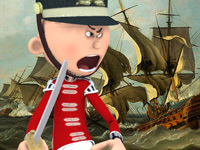
RESOURCES
This article uses material from the Wikipedia article "Seven Years' War", which is released under the Creative Commons Attribution-Share-Alike License 3.0.
© Stories Preschool. All Rights Reserved.
